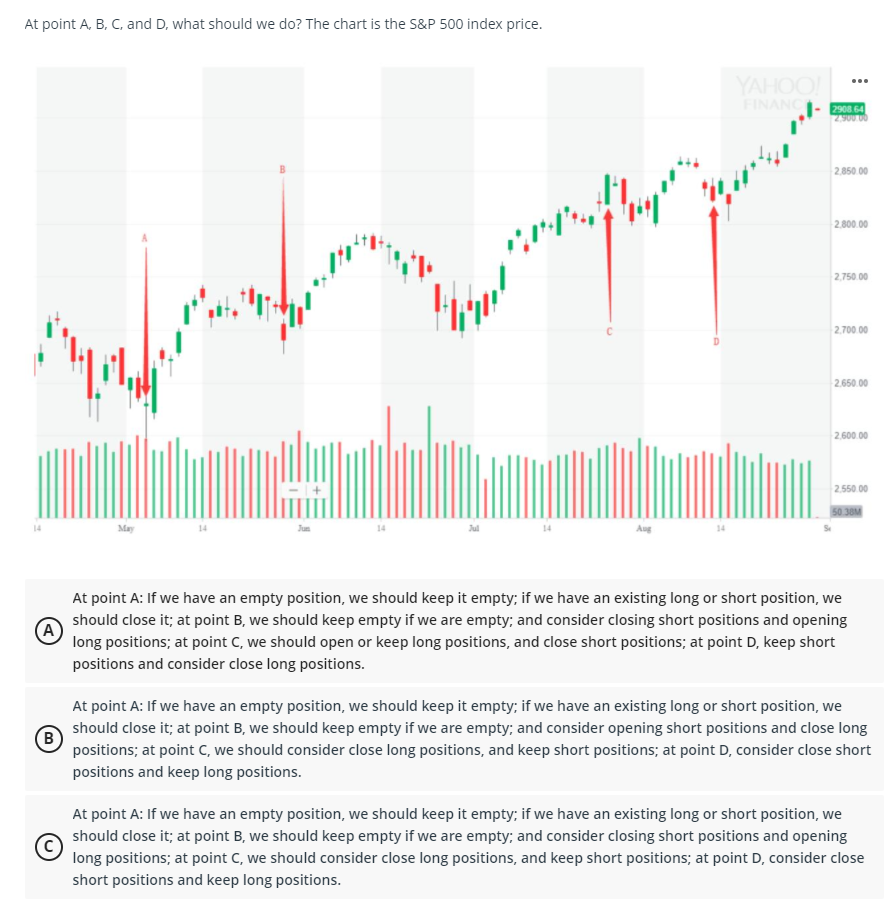Please explain your answer and provide support to correspond it, as I have had an issue with wrong answers before. Thank you!

At point A, B, C, and D, what should we do? The chart is the S&P 500 index price. FINANA 2908 64 20 2850.00 WY 2.800.00 1,1444 2.750.00 14hem 2.700.00 2.650.00 2 600.00 2.550.00 50 38M 14 My Aug A At point A: If we have an empty position, we should keep it empty; if we have an existing long or short position, we should close it; at point B, we should keep empty if we are empty; and consider closing short positions and opening long positions; at point C, we should open or keep long positions, and close short positions; at point D, keep short positions and consider close long positions. B At point A: If we have an empty position, we should keep it empty; if we have an existing long or short position, we should close it; at point B, we should keep empty if we are empty; and consider opening short positions and close long positions; at point C, we should consider close long positions, and keep short positions; at point D, consider close short positions and keep long positions. At point A: If we have an empty position, we should keep it empty; if we have an existing long or short position, we should close it; at point B, we should keep empty if we are empty, and consider closing short positions and opening long positions; at point C, we should consider close long positions, and keep short positions; at point D, consider close short positions and keep long positions. At point A, B, C, and D, what should we do? The chart is the S&P 500 index price. FINANA 2908 64 20 2850.00 WY 2.800.00 1,1444 2.750.00 14hem 2.700.00 2.650.00 2 600.00 2.550.00 50 38M 14 My Aug A At point A: If we have an empty position, we should keep it empty; if we have an existing long or short position, we should close it; at point B, we should keep empty if we are empty; and consider closing short positions and opening long positions; at point C, we should open or keep long positions, and close short positions; at point D, keep short positions and consider close long positions. B At point A: If we have an empty position, we should keep it empty; if we have an existing long or short position, we should close it; at point B, we should keep empty if we are empty; and consider opening short positions and close long positions; at point C, we should consider close long positions, and keep short positions; at point D, consider close short positions and keep long positions. At point A: If we have an empty position, we should keep it empty; if we have an existing long or short position, we should close it; at point B, we should keep empty if we are empty, and consider closing short positions and opening long positions; at point C, we should consider close long positions, and keep short positions; at point D, consider close short positions and keep long positions







